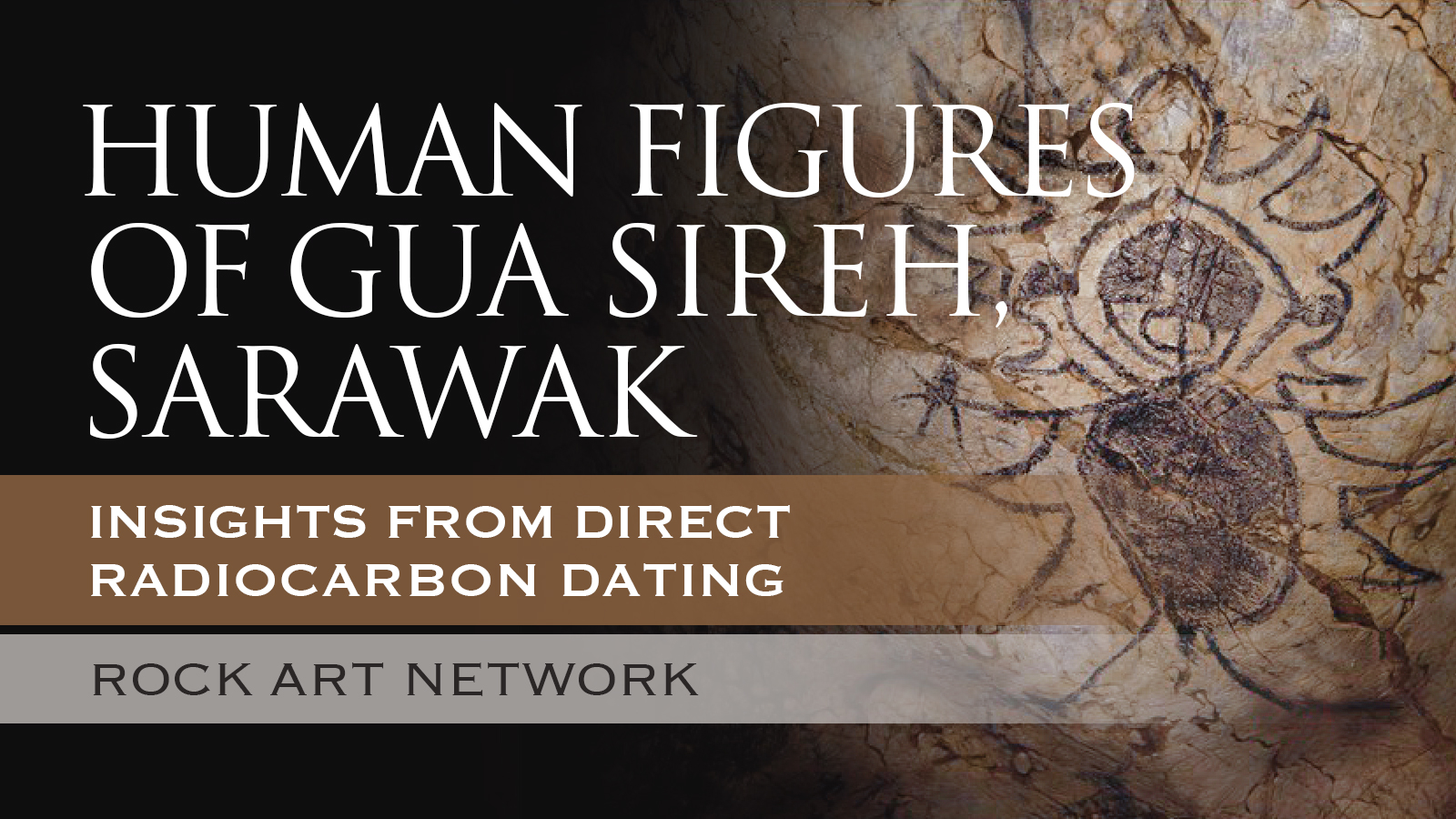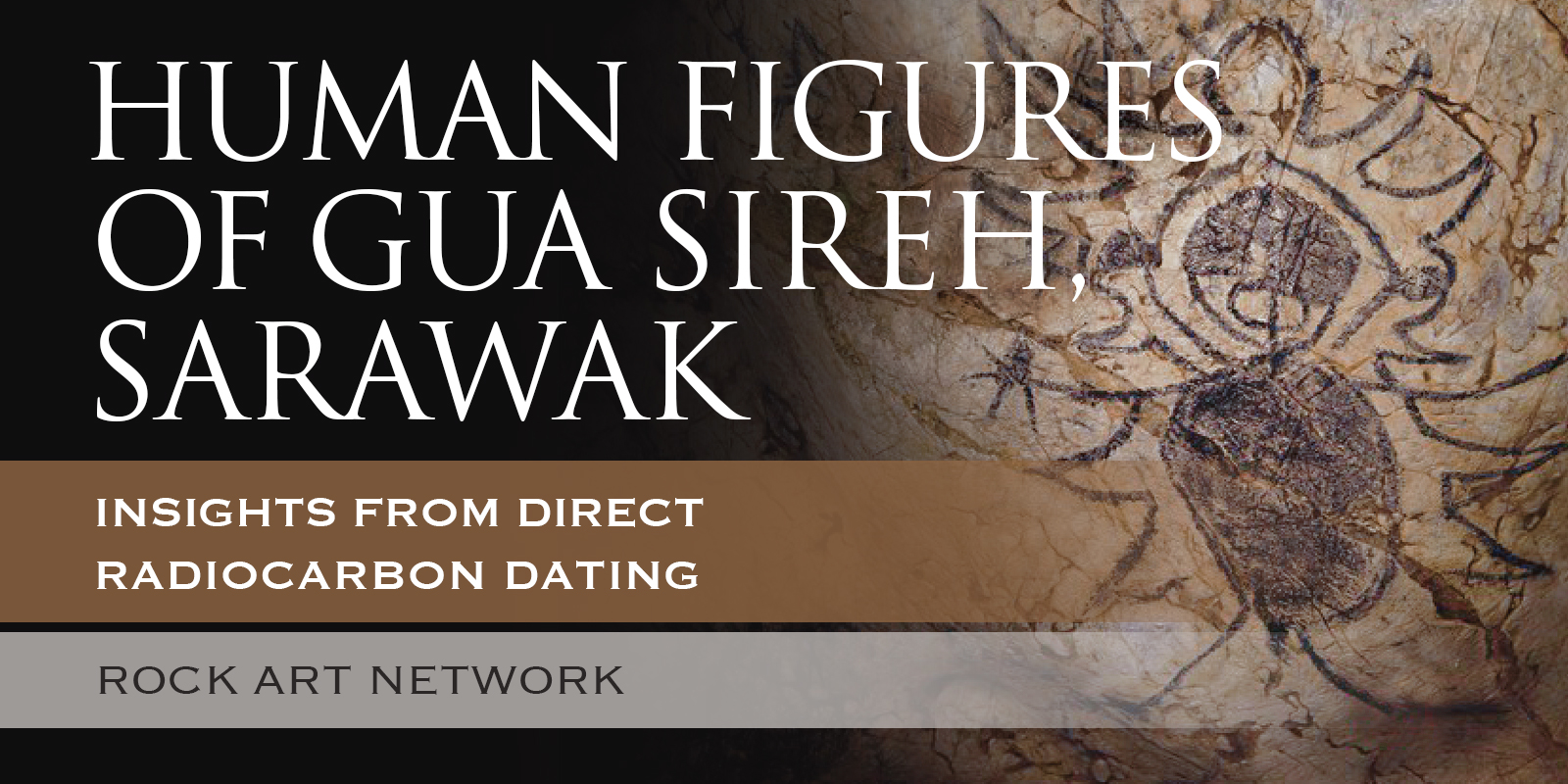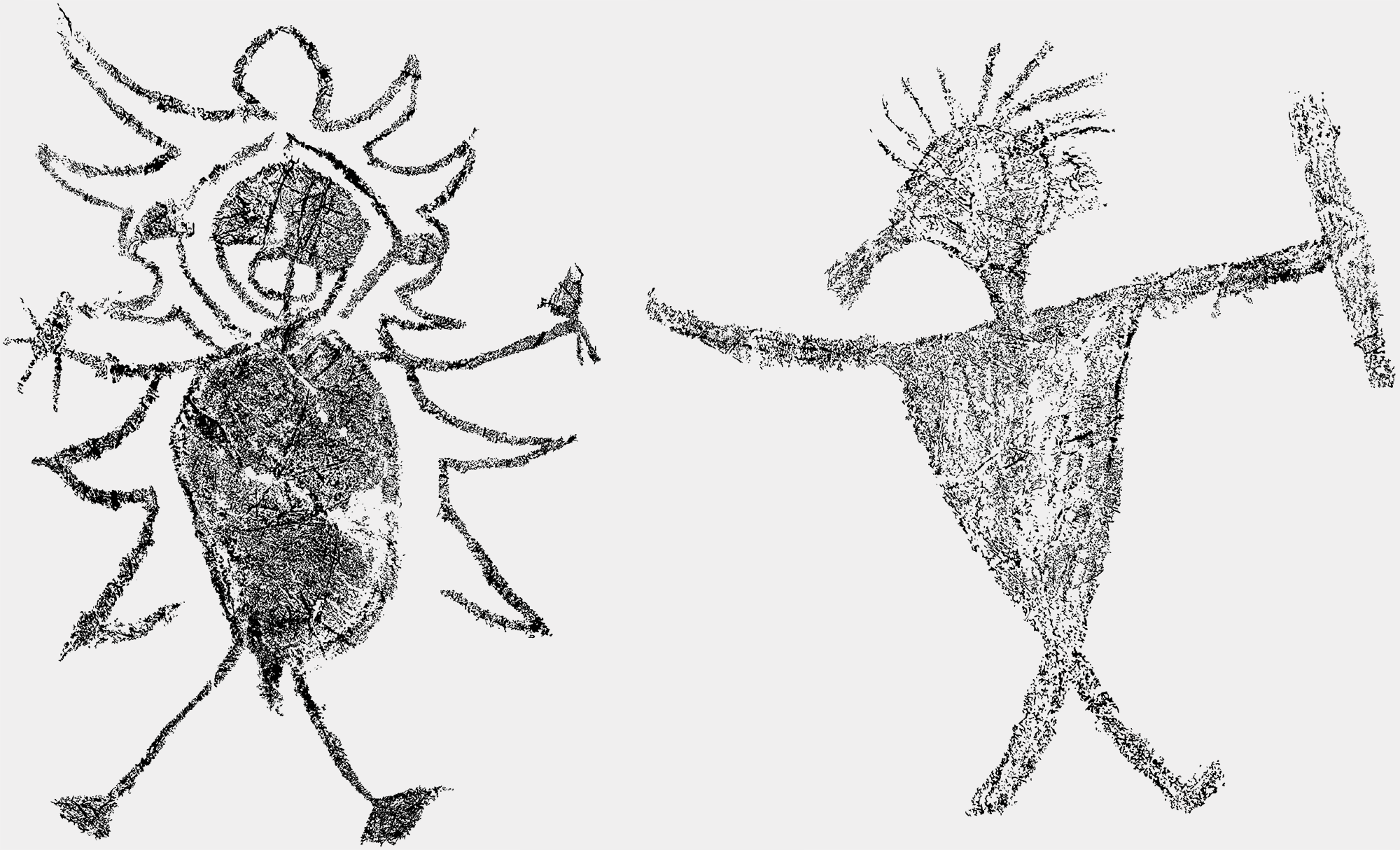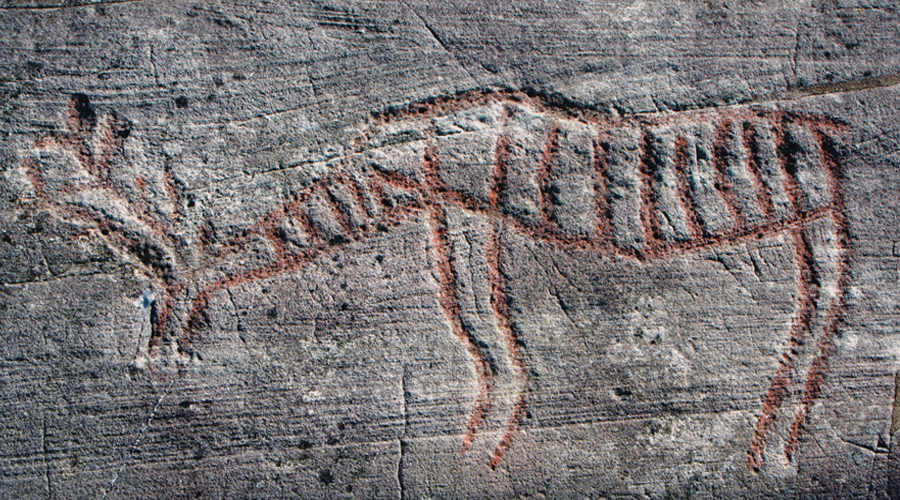


Jillian Huntley1,2*, Paul S. C. Tacon2,3*, Andrea Jalandoni2,3, Fiona Petchey4, Emilie Dotte-Sarout5, Mohammad Sherman Sauffi William6
1 Griffith Centre for Social and Cultural Research, Griffith University, Gold Coast & Nathan, Queensland, Australia, 2 Australian Research Centre for Human Evolution, Griffith University, Gold Coast & Nathan, Queensland, Australia, 3 Place, Evolution and Rock Art Heritage Unit, Griffith Centre for Social & Cultural Research, Griffith University, Gold Coast, Queensland, Australia, 4 Waikato Radiocarbon Dating Laboratory, Te Aka Mātuatua—School of Science, University of Waikato, Hamilton, New Zealand, 5 School of Social Sciences, Discipline of Archaeology, University of Western Australia, Perth, Australia, 6 Sarawak Museum Department, Kuching, Sarawak, Malaysia.
* j.huntley@griffith.edu.au (JH); p.tacon@griffith.edu.au (PSCT)

A fundamental challenge facing rock art researchers, and all those who study the human past, is understanding the age of their subject. Securely situating rock images in their chronological and cultural context is the foundation for interpreting them. With the right circumstances for generating numeric age determinations scarce, those scientific dates that are produced become anchors for relative rock art sequences and broader insights into the human past. In recent years, dating has been a major focus of Australasian research owing to revelations that the earliest phases of rock art in central Island Southeast Asia are contemporary with, and in some cases older than, the Franco Cantabrian rock art found in the deep caves of Europe; compelling evidence that disparate early human populations were independently, simultaneously producing complex symbolic imagery on cave/rockshelter surfaces.
Island Southeast Asia’s rock art spans more than 45,500 years and was produced sporadically up until the recent past.
Taking a multifaceted approach to understanding two large anthropomorphic figures at Gua Sireh, we focused on recent ‘Austronesian style’ drawings. Used here, Austronesian denotes an association with the Neolithic communities who colonized Southeast Asia more than 2,500 years ago. Originally a linguistic construct, ’Austronesian’ has been used by archaeologists following Peter Bellwood’s foundational model to refer to a suite of material culture thought to mark the expansion of Malayo-Polynesian Austronesian speakers (with a linguistic homeland in Taiwan) across Island Southeast Asia and the Pacific. We note the utility of the term ‘Austronesian’ in relation to the Holocene rock art traditions of Island Southeast Asia and the Pacific is currently cause for reflection amongst scholars as the cultural complexity of the Neolithic period in the region continues to emerge from the archaeological record.
Using radiocarbon dating, we situate the Gua Sireh drawings in their culture-historic context, comparing the rock art with material culture excavated within the cave from the 1950s to late 1980s. To explore human-environment interactions and past technologies, we characterized the pigments applied to draw these images. Using pigment characterizations and details of the site’s history, we discuss technical complexities relating to the age estimates. Finally, we interpret these large Gua Sireh human depictions in the colonial setting in which they were made, informed by the oral histories of the Bidayuh Indigenous peoples who have continuing custodial responsibilities over the site today. This work is situated amongst recent studies across the globe that have emphasized the role of rock art in Indigenous resistance to colonial occupation, including violent frontier conflicts, even enslavement.
The aim of this research was to understand when the large human figures at Gua Sireh were made. We targeted the two largest motifs in the cave to test the viability of radiocarbon for dating Gua Sireh motifs, with the aim of not adversely visually impacting the rock art. In addition, we selected samples that would aid in the interpretation of age determinations, exploring the taphonomy of the rock art panels and pigments. We sampled a weathered anthropomorphic figure at the entrance to the main art panels in an area of active cave surface (GS1), as well as a ‘stick figure’ motif (GS2) known from previous recordings to have been produced sometime after 1989, but before 2010. In so doing, we deliberately selected a location that we reasoned would be chal- lenging for carbon preservation (GS1) and a recent artwork that could help address the likeli- hood of ‘the old charcoal problem’ (GS2) whereby an older age is returned as a result of aged charcoal being used to create a recent image. In addition, the recent stick figure was sampled to check for potential contaminants as it was made on a panel surface thought to have been modified during active conservation management works undertaken in the 1980s.
The full open access research paper is available to download here:
https://doi.org/10.1371/journal. pone.0288902
→ Members and affiliated institutions of the Rock Art Network
by
George Nash
5/09/2024 Recent Articles
→ Sigubudu: Paintings of people with guns in the northern uKhahlamba-Drakensberg
by Aron Mazel
22/07/2024
by Richard Kuba
13/06/2024
by Meenakshi Dubey-Pathak
8/03/2024
by Rock Art Network
6/02/2024
by Rock Art Network
14/12/2023
by Sam Challis
5/12/2023
by Aron Mazel
30/11/2023
by Sam Challis
21/11/2023
by Sam Challis
15/11/2023
by Sam Challis
10/11/2023
by Rock Art Network
6/11/2023
by Rock Art Network
3/11/2023
by Aron Mazel
2/11/2023
by Meenakshi Dubey-Pathak
26/09/2023
by Paul Taçon
24/08/2023
by Aron Mazel
13/06/2023
by Paul Taçon
5/06/2023
by Paul Taçon
15/03/2023
by George Nash
14/03/2023
by Noel Hidalgo Tan
10/02/2023
by George Nash
01/02/2023
by Meenakshi Dubey-Pathak, Pilar Fatás Monforte
29/11/2022
by Aron Mazel, George Nash
21/09/2022
by Paul S.C. Taçon, Sally K. May, Ursula K. Frederick, Jo McDonald
07/07/2022
by Meenakshi Dubey-Pathak
26/07/2022
by Paul Taçon
20/07/2022
by David Coulson
16 June 2022
by Paul Taçon
25 April 2022
by Noel Hidalgo Tan
20 April 2022
by Meenakshi Dubey-Pathak
14 March 2022
by Carolyn Boyd & Pilar Fatás
02 March 2022
by David Coulson
07 February 2022
by Johannes H. N. Loubser
06 February 2022
by Meenakshi Dubey-Pathak
05 February 2022
by Aron Mazel
28 January 2022
by Aron Mazel
8 September 2021
by David Coulson
17 August 2021
by Ffion Reynolds
21 June 2021


by Aron Mazel
22/07/2024
by Richard Kuba
13/06/2024
by Meenakshi Dubey-Pathak
8/03/2024
by Rock Art Network
6/02/2024
by Rock Art Network
14/12/2023
by Sam Challis
5/12/2023
by Aron Mazel
30/11/2023
by Sam Challis
21/11/2023
by Sam Challis
15/11/2023
by Sam Challis
10/11/2023
by Rock Art Network
6/11/2023
by Rock Art Network
3/11/2023
by Aron Mazel
2/11/2023
by Meenakshi Dubey-Pathak
26/09/2023
by Paul Taçon
24/08/2023
by Aron Mazel
13/06/2023
by Paul Taçon
5/06/2023
by Paul Taçon
15/03/2023
by George Nash
14/03/2023
by Noel Hidalgo Tan
10/02/2023
by George Nash
01/02/2023
by Meenakshi Dubey-Pathak, Pilar Fatás Monforte
29/11/2022
by Aron Mazel, George Nash
21/09/2022
by Paul S.C. Taçon, Sally K. May, Ursula K. Frederick, Jo McDonald
07/07/2022
by Meenakshi Dubey-Pathak
26/07/2022
by Paul Taçon
20/07/2022
by David Coulson
16 June 2022
by Paul Taçon
25 April 2022
by Noel Hidalgo Tan
20 April 2022
by Meenakshi Dubey-Pathak
14 March 2022
by Carolyn Boyd & Pilar Fatás
02 March 2022
by David Coulson
07 February 2022
by Johannes H. N. Loubser
06 February 2022
by Meenakshi Dubey-Pathak
05 February 2022
by Aron Mazel
28 January 2022
by Aron Mazel
8 September 2021
by David Coulson
17 August 2021
by Ffion Reynolds
21 June 2021
Friend of the Foundation


by Aron Mazel
22/07/2024
by Richard Kuba
13/06/2024
by Meenakshi Dubey-Pathak
8/03/2024
by Rock Art Network
6/02/2024
by Rock Art Network
14/12/2023
by Sam Challis
5/12/2023
by Aron Mazel
30/11/2023
by Sam Challis
21/11/2023
by Sam Challis
15/11/2023
by Sam Challis
10/11/2023
by Rock Art Network
6/11/2023
by Rock Art Network
3/11/2023
by Aron Mazel
2/11/2023
by Meenakshi Dubey-Pathak
26/09/2023
by Paul Taçon
24/08/2023
by Aron Mazel
13/06/2023
by Paul Taçon
5/06/2023
by Paul Taçon
15/03/2023
by George Nash
14/03/2023
by Noel Hidalgo Tan
10/02/2023
by George Nash
01/02/2023
by Meenakshi Dubey-Pathak, Pilar Fatás Monforte
29/11/2022
by Aron Mazel, George Nash
21/09/2022
by Paul S.C. Taçon, Sally K. May, Ursula K. Frederick, Jo McDonald
07/07/2022
by Meenakshi Dubey-Pathak
26/07/2022
by Paul Taçon
20/07/2022
by David Coulson
16 June 2022
by Paul Taçon
25 April 2022
by Noel Hidalgo Tan
20 April 2022
by Meenakshi Dubey-Pathak
14 March 2022
by Carolyn Boyd & Pilar Fatás
02 March 2022
by David Coulson
07 February 2022
by Johannes H. N. Loubser
06 February 2022
by Meenakshi Dubey-Pathak
05 February 2022
by Aron Mazel
28 January 2022
by Aron Mazel
8 September 2021
by David Coulson
17 August 2021
by Ffion Reynolds
21 June 2021
Friend of the Foundation





















